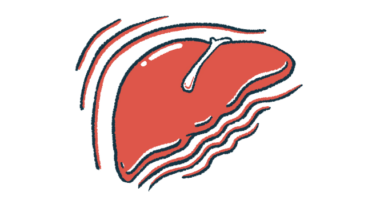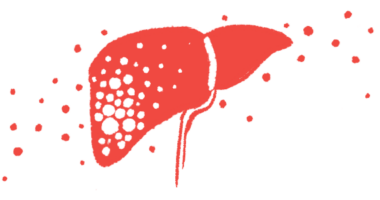Measuring Tissue Stiffness May Help Diagnose CF Liver Disease

A technique called 2D shear wave elastography, which measures the stiffness of tissues, could be useful for detecting liver disease in people with cystic fibrosis.
That’s according to the study, “2D Shear Wave Elastography, a promising screening tool for Cystic Fibrosis liver disease, shows a correlation between vitamin D and liver stiffness,” published in the Journal of Cystic Fibrosis.
Cystic fibrosis-associated liver disease, or CFLD, affects about a third of people with CF. Diagnosing this condition usually involves abdominal examinations paired with ultrasound (imaging using sound waves) and biochemical tests. A liver biopsy is usually used to confirm the diagnosis, though, since this is an invasive procedure, alternative methods are being explored in research.
One such method is elastography, a type of analysis that detects how stiff bodily tissues are.
Scientists in Sweden assessed the use of an ultrasound-linked elastography technology called 2D shear wave elastography, or 2D SWE, to diagnose CFLD in youths receiving care at a specialty center in Sweden.
“In this study we describe the use of 2D SWE in the screening for CFLD in a clinical setting at a pediatric CF center,” the researchers wrote. “Furthermore, we investigated the relationship between liver stiffness and nutritional status, lung function and glucose [sugar] tolerance.”
The researchers said an advantage of using 2D SWE is that it’s noninvasive and it could be combined with a standard ultrasound.
The study included data for 51 children and adolescents with CF with a median age of 11 (range 5-18). About one-third had abnormalities on a liver ultrasound such as signs of scarring (fibrotic tissue) or abnormal fat deposits.
Liver biopsies showed cirrhosis (substantial liver scarring) in four patients. Based on 2D SWE, the tissue stiffness in these patients was significantly higher than in the remaining patients — median 15.45 vs. 5.2 kiloPascals (a unit of pressure).
“Measuring liver stiffness by 2D SWE is feasible in clinical practice, and it can be performed in conjunction with the more standard ultrasound investigation,” the scientists wrote.
A significant negative correlation between 2D SWE measures and vitamin D levels was seen in statistical analyses. In other words, people with stiffer livers tended to have lower vitamin D levels.
“We found vitamin D deficiency to be associated with increased liver stiffness which might be an indication of suboptimal nutritional status and as such associated with CFLD,” the team noted.
Higher liver stiffness also was associated with poorer lung function and glucose tolerance (the body’s ability to process sugar).
“Whether a common pathophysiological pathway explains these relationships remains the aim for future studies to explore further,” the researchers wrote.
The team noted that the small sample size was a limitation of the study, and that the results may not be directly comparable with other elastography techniques.








